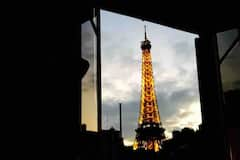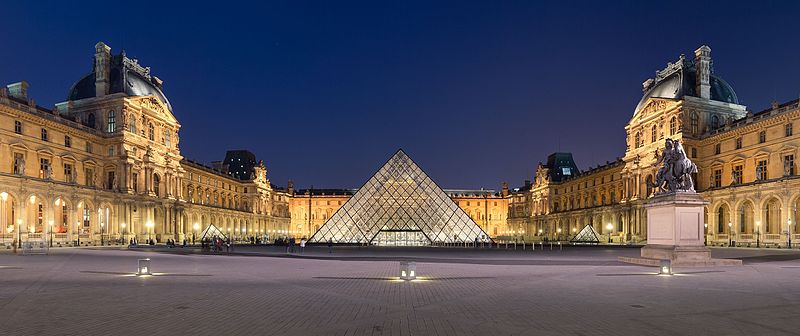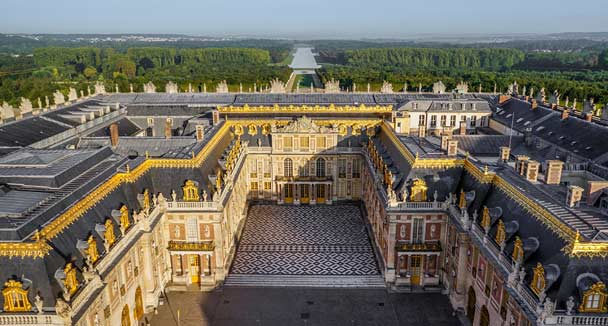The Louvre, Place de la Concorde and Arc de Triomphe are some of Paris’s most famous attractions. However, the fact that they belong to the Axe Historique (also known as the Triumphal Way) escapes common knowledge. As its name suggests, the Axe Historique is a long stretch at the Right Bank of Paris, where various fateful events took place in the last millennium. Along the Axe Historique, you can do and see a lot of things such as shop at the Champs-Elysees, relax in the Tuileries Garden and trace historic events.
Start at the Louvre

The Louvre is not only a famous museum, but also one of the most historic places of the medieval French Kingdom. The present Louvre is nothing like the initial structure, which was the main city’s stronghold. Once you are in the Louvre, take a staircase to the basement level in the Sully Wing, which leads you to the remains of a once powerful fortress. The fortress, on which the foundation of the future Louvre Palace was built, was commissioned by King Philippe II Auguste, to protect Paris from English and Viking raids. The reconstruction included bases of massive walls, turrets and encircling moats.
You certainly can’t miss the famous pyramid of the Louvre that symbolizes the Great Pyramid of Giza (Egypt).
The Arc de Triomphe du Carrousel

Located halfway between the Louvre’s entrance and the Tuileries Garden, this triumphal arch is mostly overlooked by people rushing to the museum. The Arc de Triomphe du Carrousel has three-arches and was commissioned by Napoleon Bonaparte at the same time as the more famous Arc de Triomphe at the Champs-Elysees. The Arc de Triomphe du Carrousel is highly-elaborated, with friezes that illustrate Napoleon’s military and diplomatic victories. The statues of soldiers at the upper part of the arch represent corps of the Napoleonic Grande Armee (Great Army) — dragoons (cavalry units), grenadiers (Special Forces), sappers (engineers) and others.
The sculptural composition atop the monument, however, is the arch’s centerpiece. It’s a copy of the famous Horses of Saint Mark’s, which used to decorate the monument. As the Grande Armee conquered Venice, the famous sculpture was brought to Paris, where it remained until 1815. After Napoleon’s final defeat at Waterloo, the Horses of Saint Mark’s were returned to Venice.
Rest at the Tuileries Garden

The Arc de Triomphe du Carrousel used to be the entrance to the Tuileries Palace complex, which is now the majestic classical Tuileries Garden. The garden abounds with sculptures, manicured gardens and trees, and has two ponds. The length of the garden is approximately 1 kilometer (0.62 miles), and visitors can walk from one end to the other within 15 minutes. Besides relaxing on the garden benches, you can also enjoy rides in a fun park and experience superb views from the Ferris wheel.
In the past, the Tuileries Palace formed the fourth wing of the Louvre. In 1871 it was destroyed by the Communard insurgents as a symbol of royalty. The Communards were the followers of a Communist revolutionary faction that ruled Paris from March to May in 1871. However, this opened up the views of the Axe Historique all the way to the La Defense district.
You might be interested in these Airbnbs!
Proceed to the Place de la Concorde

One of the largest European squares boasts rich decoration, comprising a genuine Egyptian obelisk and avant-garde fountains. The obelisk, shipped from Egypt in the 19th century, was a token of gratitude from Egyptian authorities to the French Empire for their help deciphering hieroglyphs.
The fountains that flank the obelisk were the first of their type created in Paris. While the northern fountain is the allegory to the Rhone and Rhine Rivers, the southern one refers to the Atlantic Ocean and the Mediterranean Sea, which form part of the French border. The distance between the Place de la Concorde and the Louvre is 1 km (0.62 miles).
By the end of the 18th century, during the French Revolution’s Reign of Terror (1792–1795), the expansive square was the place of execution where thousands of people were guillotined, including the overthrown King Louis XVI and his wife, Marie-Antoinette.
Paris Tour Guide
Patricia Aveline
My name is Patricia Bollinger and my family is French. I have always had a passion for art and history and I chose to study them when I went to university. I have been a licensed tour guide for the last 30 years and I work in French, English and Italian. My passion and also as part of my work I travel a lot. For this reason, I have a good idea of visitors expectations. Naturally I want to share this passion for my country and its heritage with foreign visitors.I also love cooking and I am a foody.
Tours by Patricia
Champs-Elysees, the central point of the Triumphal Way

The Champs-Elysees Avenue is the main triumphal thoroughfare in Paris, stretching from the Place de la Concorde to the Arc de Triomphe de l’Etoile. Laid out in the 17th century by Andre Le Notre, the Louis XIV’s chief gardener, as the extension of the Tuileries Garden, the Champs-Elysees gained in prominence in the following centuries, becoming the most exclusive neighborhood worldwide. Various military celebrations and popular events take place along the avenue, including the July 14th celebrations (National Day of France) and the finish of the Tour de France race.
Besides high-end shopping, you can enjoy outstanding exhibitions in the Grand Palais and Petit Palais museums, relax in the neighboring gardens and observe public works of art along the way. Furthermore, the layout of the avenue was adopted by Buenos Aires (Argentina) and Washington, D.C. (the U.S.A.) as an urban concept for their major avenues.
Arc de Triomphe de l’Etoile and its works of art

Conceived as a result of Napoleon Bonaparte’s promise to his soldiers after the Battle of Austerlitz (1805) that they will march back home under the triumphal arches, the Arc de Triomphe de l’Etoile was commissioned at the same time as the Arc de Triomphe du Carrousel. Unlike the latter (completed in 1808), this Triumphal Arch’s construction dragged on and was completed only during the 1830s, long after Napoleon’s downfall and death.
Napoleon himself is the key figure of the arch’s artwork, which is related to the Revolutionary and Napoleonic Wars. Some of the most famous works of art are large friezes named La Marseillaise, the Triumph of Napoleon and Peace. Find out where Napoleon’s Grande Armee and the revolutionary troops achieved significant victories by taking a look at the inscriptions on the shields that decorate the ceiling. From the top of the Arc de Triomphe, you can experience marvelous panoramic views all over Paris, while you can get deeper knowledge about the arch’s construction and the last few centuries’ warfare in the small museum within the Arc de Triomphe de l’Etoile.
Bonus knowledge: The monuments along the Axis’ major points are strategically located so that the distances between them double as you go westward. The Arc de Triomphe de l’Etoile is located exactly 2 kilometers (1.25 miles) from Place de la Concorde, which is double the distance between the square and the Arc de Triomphe du Carrousel, the starting point of the Axe Historique.
Grande Arche de la Defense

The Grande Arche de La Defense is the final point of the Axe Historique, completed at the second centenary of the French Revolution (July 14, 1989). Located in the futuristic La Defense district, the single arch is so huge that the Notre Dame Cathedral could fit under it. The Grande Arche is perfectly aligned with the other two triumphal arches. From the arch’s base, you have an open view along the Axe Historique and its points of interest. The symbol of Paris’s modern quarter is 4 kilometers (2.5 miles) from the Arc de Triomphe de l’Etoile. Again, as you move westward along the Axis, you need to cover double the distance than between the Place de la Concorde and the Arc de Triomphe de l’Etoile.
Interesting facts
The Axe Historique is laid out to follow the sun’s trajectory, reflecting its path during the entire year, more or less. If you happen to be in Paris around May 10th or August 1st, assume the position at the beginning of the Champs-Elysees and watch the sun setting just between the Arc de Triomphe de l’Etoile’s arches. Furthermore, each subsequent arch along the Axe Historique is more than double the height of the previous arch. The Grande Arche de la Defense is 110 meters (361 feet) tall, the Arc de Triomphe is 50 meters (164 feet), whilst the smallest Arc de Triomphe du Carrousel is “only” 20 meters (65.5 feet) tall.
History
Get Trip101 in your inbox
Unsubscribe in one click. See our Privacy Policy for more information on how we use your data



























Create an account to